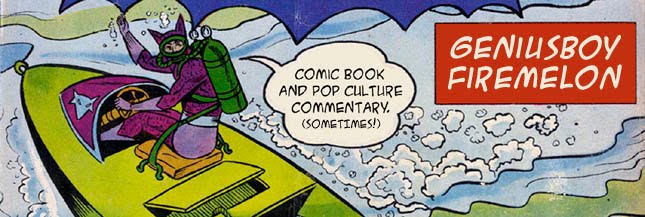According to the final section of the pitch, titled "The Writing Process":
Project: Superman 2000 includes a new and different approach to the very way the comics are created.
The four of us would like to pool our talents in a unique way. We’re less interested in seeing each Super-book assigned to one writer as we are in putting everyone’s individual talents to their best use every week. Morrison and Millar are headmen, full of new and refreshing ideas; Peyer and Waid write from the heart with an emphasis on dialogue and characterization. No more round-robin scripting where some guy’s always stuck writing Chapter Three; instead, scenes and scripts fly back and forth across the Great Pond, and instead of duplicating past dynamics where good writers are introduced into the Superman Collective and then sometimes forced to subsume their individual styles and visions, the adventures of Superman are chronicled by a group of like-minded scribes who were friends before they were partners, who know they share a common vision, who are willing and eager to work as a unit for the good of their own hero.
It's a whole new way of writing comics, but it's not without precedent. In broad strokes, it’s similar to the way in which soap operas are crafted. Different writers are responsible for certain characters, plots and subplots, all according to their particular passions and specialties. We're still ironing out the details of the actual process, and we're all aware that any editor's heart would freeze solid at the sound of the names Morrison, Millar and Peyer in connection with anything that requires, oh, a weekly deadline...but since Waid meets his deadlines with an almost Catholic-guilt ferocity, he’s volunteering to be the Rob Petrie of this little Alan Brady Show--the writer who'll filter all the work and make dead certain it's on the editor’s desk when it's supposed to be. As much as he values his professional reputation, he’s willing to stake it on this thrilling and potentially revolutionary process. In the end, we know we can come through with stories the readers will be as excited to see as we will.
Hmmm...what a strange and revolutionary notion--a team of comic top-notch comic writers working in unison (sharing each issue by crafting subplots and character beats, and taking advantage of what they each do best) to create what would have been, in essence, a weekly comic. Not surprisingly, when this same writing process was actually tried, half a decade later, with DC's 52, both Morrison and Waid were involved. (Millar was at Marvel by then, and Peyer was pretty much out of comics at that point.) And I think it worked quite well on 52. Far, far better than whatever writing model was used for Countdown (supposedly Paul Dini as head writer an a rotating cast of writers on sequential issues, but I'm not exactly sure that's how it really happened--there seemed to be a lot of editorial influence on the nature of the series--far more than we saw in 52).
It will be interesting to see if Busiek and company can pull of a successful weekly series with Trinity, a comic which is scheduled to hit shelves today. One would think that a weekly series would be incredibly difficult to pull off, but not because of the writing. The drawing is the slow part. The writing should, in theory, take less time. But it doesn't work that way, does it? Everything is always harder than you think it will be, and when Morrison and company proposed collaboration on a weekly Superman series, they had no idea what they were in for. Ask Morrison or Waid if they'd ever do what they did on 52 again, and see what they say (note: it's not happy thoughts about ever doing anything of the sort, ever again).

3 comments:
The pace at which writing occurs is much more mixed than art, I'd imagine. With writing, if it's coming, it will usually come fast--but if it's not, then nothing happens. With art, it can be slow, but at least there's always something to do--the script is there, you know WHAT to do, theoretically.
With Trinity, I imagine that if anything slows it down, it will be the writing--just because Mark Bagley has proven his ability to do two comics a month (which is really what he's doing on Trinity since his portion is half of the issue), while Busiek hasn't undertaken a schedule like this before (I assume). However, I do think this weekly has the best shot at critical acclaim because of the consistency of writing and art.
I can't but wonder how the art on the Superman 2000 books would have turned out. Would the whole run become like Morrison's JLA or New X-Men with various artists of differing skill because of the nature of the four titles per month, or would they have structured it like Amazing Spider-Man right now with an artist per arc (which, even then, would roughly approximate Morrison's New X-Men run).
Except the artists on Spider-Man have been pretty consistently excellent so far. Not so true on New X-Men. (Although, unlike many people, I think the New X-Men art, even with Igor Kordey's rush jobs, still looks better than Howard Porter's work on JLA)
You'll get no argument from me.
Post a Comment